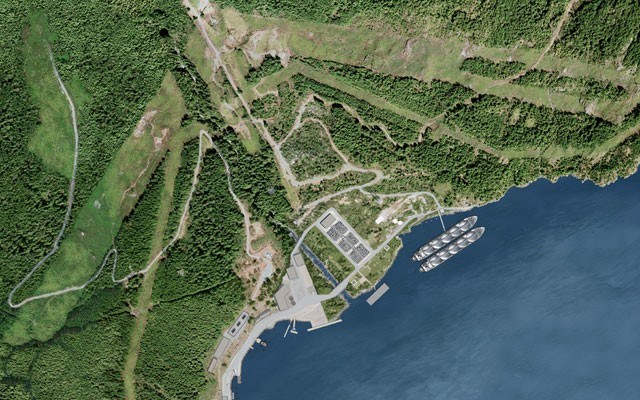At first glance, Woodfibre LNG and its VP of corporate affairs Byng Giraud feel the project meets the Government of Canada's new "guiding principles for environmental assessments" released on Jan. 27.
The five principles state that: 1: No project proponent will be forced to start over; 2: Decisions will be based on science, traditional knowledge of Indigenous people and other relevant evidence; 3: The views of the public and affected communities will be sought and considered; 4: Indigenous peoples will be meaningfully consulted and, where appropriate, impacts on their rights and interests will be accommodated and; 5: Direct and upstream gas emissions linked to the projects under review will be assessed.
"The first four are things we think we've already addressed, pretty much, because we went above and beyond by entering the Squamish Nation process," Giraud said. "We've tried to do things in a more progressive manner, going with electric drives (and) making a lot of changes on site based on public comment."
The fifth principle, regarding upstream GHG emissions, provides less certainty. Upstream emissions are defined as GHG emissions associated with the production, processing, transmission, storage and distribution of a fossil fuel, beginning with the extraction of raw materials from the fossil fuel origin and ending with the delivery of the fossil fuel to the site of use.
"That's what we're going to have to do some additional analysis on," Giraud said.
At the request of the Canadian Environmental Assessment Agency (CEAA), Environment and Climate Change Canada has analyzed the upstream greenhouse gas emissions associated with the proposed Woodfibre LNG project, a CEAA spokesperson wrote in an email.
The analysis will soon be made available on the CEAA's website, after which the proponent, public and Indigenous groups will be invited to comment.
Once the proponents see what the federal government comes back with, there will be more work to be done, Giraud said.
The Woodfibre LNG project received an environmental certificate from the Squamish Nation on Oct. 22, and a week later got assent from the provincial government. Obtaining federal approval is the last major hurdle on the regulatory side of things.
The 24-inch Fortis BC pipeline from Eagle Mountain to Squamish that will supply natural gas for the project is also awaiting approval, both from the Squamish Nation and the provincial government.
"Those are both in progress," Giraud said. "(Fortis) had to do some more significant work on the Squamish Nation conditions than we had to do with regards to routing and that sort of thing, and compressor stations."
Giraud said the project is currently looking at optimization to lower some of its capital costs, making it more appealing to engineering firms.
"Once the certificates are in hand with us and Fortis (and) that optimization is complete we should have something substantive to say by early summer," he said.
Meanwhile, community group My Sea to Sky — long opposed to the Woodfibre project — is hosting an event called LNG: Debunking the Myths with earth scientist David Hughes and economist Marc Lee at the Gleneagles Golf Course and Club in West Vancouver on Feb. 11.
The event will weigh the promises made by the provincial government around the LNG industry with current economic realities. Head to www.myseatosky.org/events to register.




